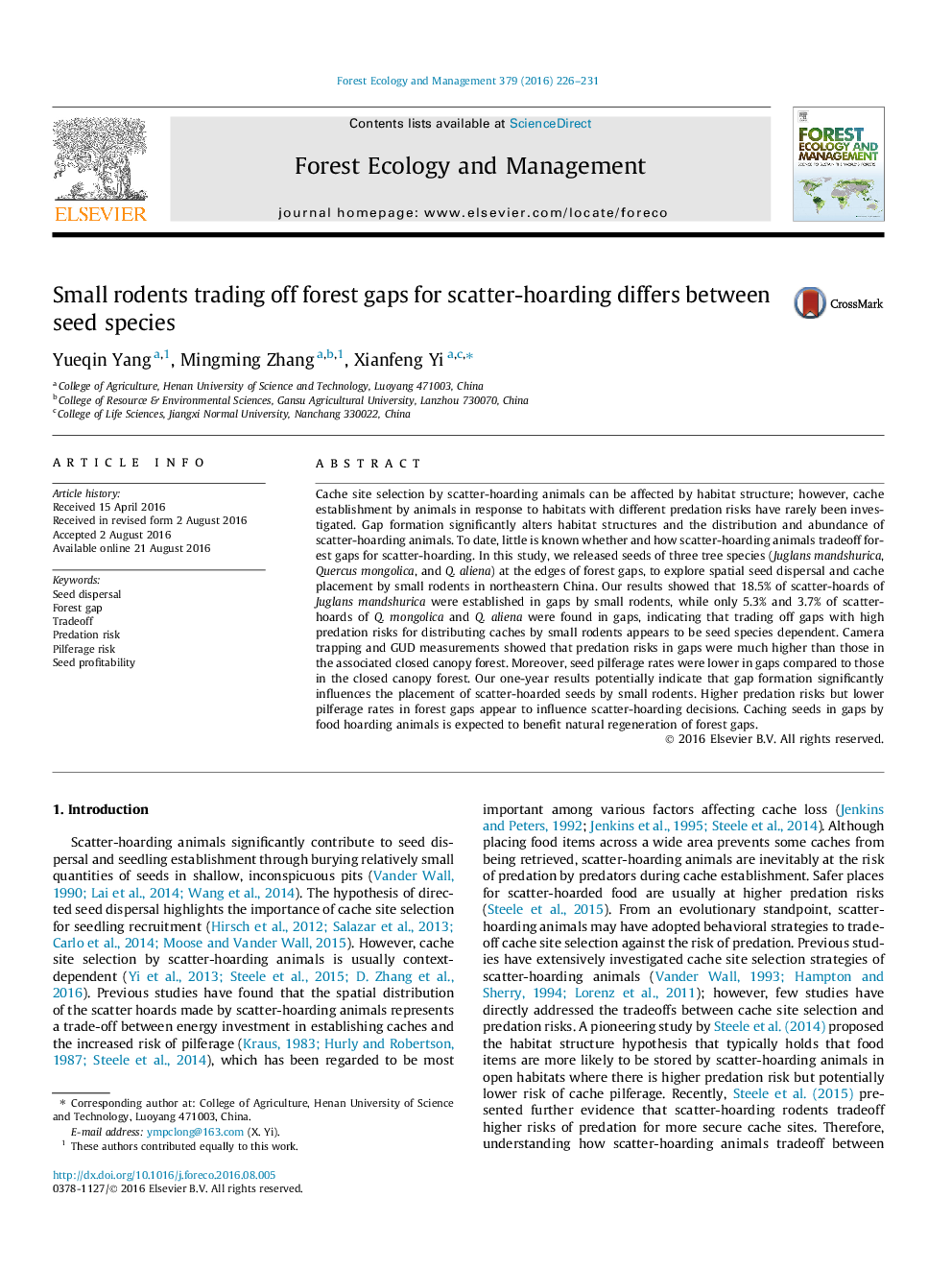| کد مقاله | کد نشریه | سال انتشار | مقاله انگلیسی | نسخه تمام متن |
|---|---|---|---|---|
| 6459646 | 1421379 | 2016 | 6 صفحه PDF | دانلود رایگان |
- We investigated whether small rodents tradeoff forest gaps for scatter-hoarding.
- Gaps showed higher predation risk but lower pilferage than closed canopy forest.
- More seeds were cached in closed canopy forest than in gaps.
- Seeds with higher profitability were more likely to be cached in gaps.
- Caching seeds in gaps is expected to benefit natural regeneration of forest gaps.
Cache site selection by scatter-hoarding animals can be affected by habitat structure; however, cache establishment by animals in response to habitats with different predation risks have rarely been investigated. Gap formation significantly alters habitat structures and the distribution and abundance of scatter-hoarding animals. To date, little is known whether and how scatter-hoarding animals tradeoff forest gaps for scatter-hoarding. In this study, we released seeds of three tree species (Juglans mandshurica, Quercus mongolica, and Q. aliena) at the edges of forest gaps, to explore spatial seed dispersal and cache placement by small rodents in northeastern China. Our results showed that 18.5% of scatter-hoards of Juglans mandshurica were established in gaps by small rodents, while only 5.3% and 3.7% of scatter-hoards of Q. mongolica and Q. aliena were found in gaps, indicating that trading off gaps with high predation risks for distributing caches by small rodents appears to be seed species dependent. Camera trapping and GUD measurements showed that predation risks in gaps were much higher than those in the associated closed canopy forest. Moreover, seed pilferage rates were lower in gaps compared to those in the closed canopy forest. Our one-year results potentially indicate that gap formation significantly influences the placement of scatter-hoarded seeds by small rodents. Higher predation risks but lower pilferage rates in forest gaps appear to influence scatter-hoarding decisions. Caching seeds in gaps by food hoarding animals is expected to benefit natural regeneration of forest gaps.
Journal: Forest Ecology and Management - Volume 379, 1 November 2016, Pages 226-231
